Five historic Danish Viking-Age Ring Fortresses were declared a UNESCO World Heritage in 2023. The fortresses were built between 958 and 987 under the reign of King Harald Bluetooth. The fortresses belong to the most important archaeological remains of the Viking Age in Denmark. The Viking fortresses are spread all over Denmark. Aggersborg is the largest of the Viking-Age Ring Fortresses, it was built around 980 CE, the fortress is situated near the town of Løgstør in Northern Jutland. The fortress of Borgring was built on a strategic location in front of Køge Bay on the island of Zealand, not far from Stevns Klint. The Fyrkat Fortress was built around 980 CE, the fortress is situated near the town of Hobro in Northern Jutland. Nonnebakken was built around 980 CE. Today, the ring fortress lies beneath the city of Odense on the Island of Funen. The Trelleborg Fortress was also built around the year 980 CE. The ring fortress is situated close to the town of Slagelse on the island of Zealand. The great structures built under the reign of King Harald Bluetooth included ring fortresses, bridges, road networks and a royal residence at Jelling. The Viking-Age Ring Fortresses, together with the monuments at Jelling, are important remains of the Viking Age in Denmark and renowned part the history of Denmark. The Jelling Mounds are also a UNESCO World Heritage.
www.werelderfgoedfotos.nl © Copyright World Heritage Photos
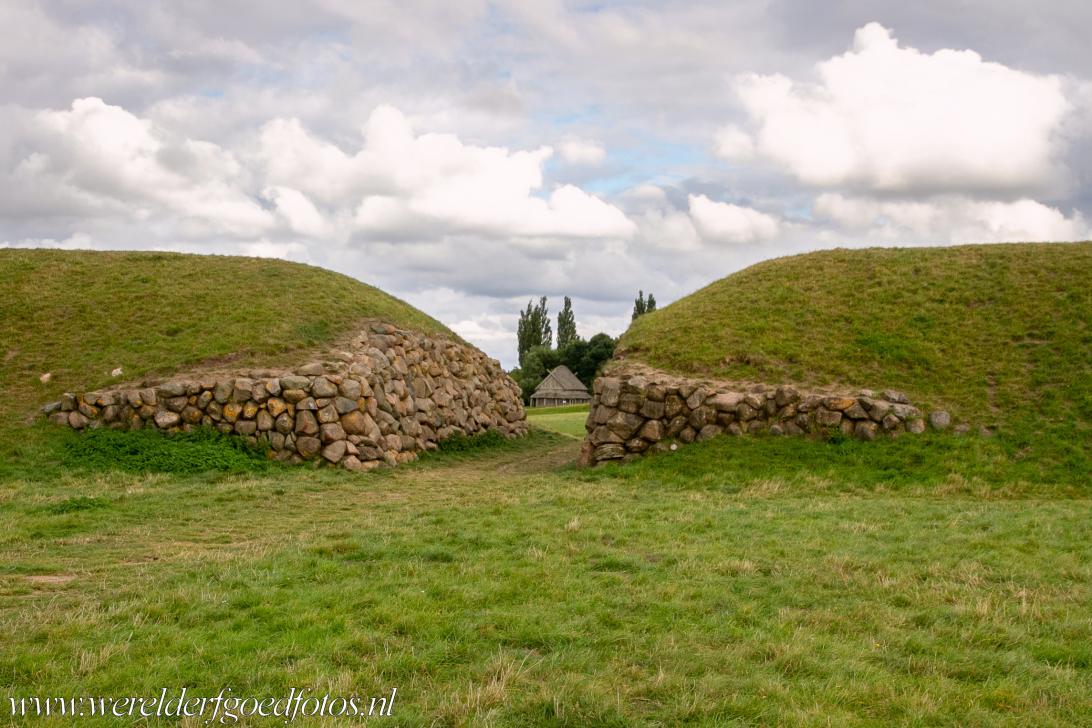
Viking-Age Ring Fortresses in Denmark: The Trelleborg Fortress was built around the year 980 CE. The circular ramparts were constructed of peat, stone and clay, they were 17 metres wide. The ramparts had four covered gateways, respectively facing North, East, South and West. The gates were covered wooden tunnels through the ramparts. The ramparts of the fortress were five metres high and were surrounded by a dry moat.

Viking-Age Ring Fortresses in Denmark: The Trelleborg Fortress was built around the year 980 CE. The circular ramparts were constructed of peat, stone and clay, they were 17 metres wide. The ramparts had four covered gateways, respectively facing North, East, South and West. The gates were covered wooden tunnels through the ramparts. The ramparts of the fortress were five metres high and were surrounded by a dry moat.
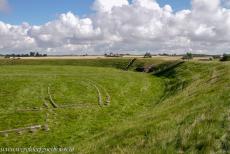
Viking-Age Ring Fortresses in Denmark: The Trelleborg Fortress was probably built on the orders of King Harald Bluetooth as a military stronghold. Most likely, the fortress was also a centre for trade. Inside the Trelleborg Fortress, the positions of the uprights and walls of the longhouses are marked in concrete. The Trelleborg ringfortress was excavated in the years 1934-1942. Most of the finds are on exhibit at the Trelleborg Museum.
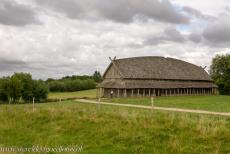
Viking-Age Ring Fortresses in Denmark: The reconstructed Trelleborg longhouse was built in 1942 as a model of the longhouses inside the fortress. The Trelleborg longhouses were almost identical. They were 30 metres long, featured vaulted walls made of thick planks, the roof was supported by large wooden beams. Most likely the longhouses were painted and also decorated with fine wooden carvings.
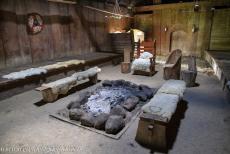
Viking-Age Ring Fortresses in Denmark: An impression of the interior of the reconstructed longhouse in Trelleborg Fortress. Trelleborg was inhabited by warriors and their families. The warroirs were probably part of the personal troops of King Harald Bluetooth. It is believed that the fortress was home to 500 people, warriors, skilled craftsmen, women, children and enslaved people.
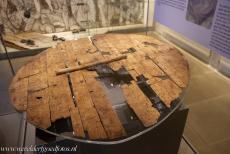
Viking-Age Ring Fortresses in Denmark: The Trelleborg Fortress Museum houses a selection of warrior equipment found at the Trelleborg Fortress. The most unique find is a Viking shield. The round wooden Viking shield was found during excavations in 2008, it was excavated about 40 metres from the South Gate of Trelleborg Fortress. The shield is made of wood cut in Norway in the late 900s. Traces of coloration indicates that the shield was originally painted red and white.
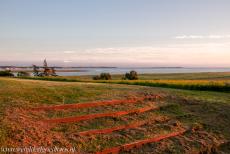
Viking-Age Ring Fortresses in Denmark: The ring fortress of Aggersborg offers an amazing panoramic view of the Limfjord. Today, the only visible remains of the ring fort are the earthen ramparts and moat. The fortresses was built around 980 by King Harald Bluetooth. Concurently with Aggersborg, several smaller ring fortresses were also built: Borgring, Fyrkat, Nonnebakken and Trelleborg. These five Viking-Age Ring Fortresses were declared a UNESCO World Heritage.
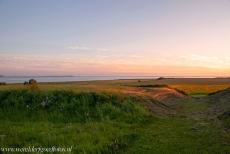
Viking-Age Ring Fortresses in Denmark: The earthen ramparts and dry moat of the ring fortress of Aggersborg, the Limfjord in the background. The Limfjord is open both towards the east and to the west and offered the safest passage between the North Sea and the Kattegat, the fortress was therefore perfectly situated for access to the main sailing routes of the Vikings as well as for controlling the Limfjord area.
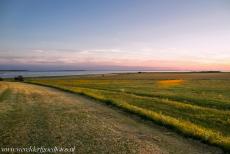
Viking-Age Ring Fortresses in Denmark: The Fortress of Aggersborg was built on a hillside at one of the narrowest points of the Limfjord. Aggersborg is both the oldest and largest of the Viking-Age Ring Fortresses in Sandinavia. The fortress consisted of a 9 m wide and a 4 m high circular rampart, the diameter was 240 m, the ring fortress had four gates, facing North, East, South and West. The courtyard inside the ramparts contained 48 large timbered longhouses.
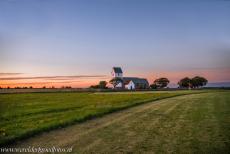
Viking-Age Ring Fortresses in Denmark: The Viking-Age Ring Fortress of Aggersborg is situated next to the Aggersborg Church. The oldest parts of the church were built in the early 1100s. Traces were found beneath the church of an older church and graves from the 11th century. During restorations works in the 1970s, several smaller runic inscriptions were discovered, the runes are dated to the period 1150-1536.
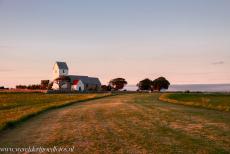
Viking-Age Ring Fortresses in Denmark: A beautiful sunset over the ring fortress of Aggersborg and the 11th century Aggersborg Church. By the end of the Viking Age, around 1050 CE, most Vikings had become Christians. Stone churches were built, but if the fortress of Aggersborg had a church or cemetery they remain to be discovered. The conversion to Christianity is marked by King Harald Bluetooth's rune stone at Jelling.
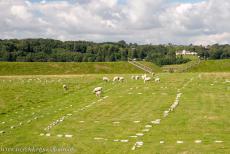
Viking-Age Ring Fortresses in Denmark: Fyrkat Fortress was built around 980 CE. It was only in use for a few years before it was abandoned. The fortress is 120 metres in diameter, the circular rampart is more than 3 metres high and 12 metres wide, it surrounded 16 longhouses divided in four housing blocks, the rampart has four gates located at the four compass points. Fyrkat was excavated in the 1950s, the positions of the walls of the longhouses are marked in concrete.
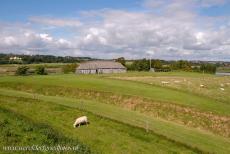
Viking-Age Ring Fortresses in Denmark: The earthen ramparts and dry moat of Fyrkat Fortress, a reconstructed Viking longhouse in the background. The house is a reconstruction of one of the 16 longhouses found at Fyrkat Fortress, the house is 28.5 metres long and 7.5 metres wide in the middle and 5 metres wide at the gables. The walls of Viking longhouses were curved inwards to create a boat-like shape. Other types of houses were also found inside the fortress.
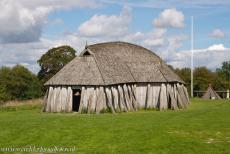
Viking-Age Ring Fortresses in Denmark: The reconstructed Viking longhouse of Fyrkat Ring Fortress. The wooden longhouses were built in the shape of an upside-down boat. A longhouse was divided into three rooms, a large hall in the central area and smaller gable rooms at each end. There are four entrances, a door in each gable and one in each side of the long flank walls. On the outside, a row of slanting support-posts helped to bear the weight of the heavy roof.
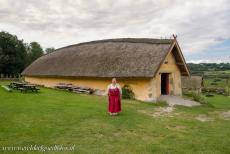
Viking-Age Ring Fortresses in Denmark: Fortress of Fyrkat and the Viking Museum Fyrkat. The Viking Age farmstead at Fyrkat consists of a number of reconstructed Viking houses, together they form a residence of a Viking leader, as known from the time of King Harald Bluetooth. The houses at the farmstead have been reconstructed based on the excavated remains of the more than 1000-years old Viking houses.
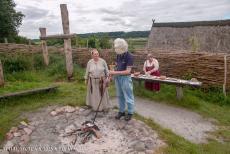
Viking-Age Ring Fortresses in Denmark: The Viking Museum Fyrkat is a working museum, here, you can learn how to bake a Viking flatbread. The small open air museum consists of a Viking farmstead, there are several reconstructed Viking houses. On most days during the summer season, there are workshops, activities for children and reenactors show the craft traditions from the Viking Age.
